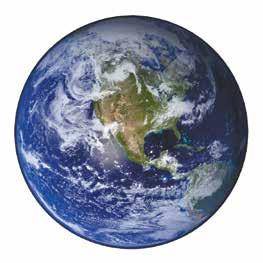community spotlight
Triple Bottom Line John Bunker Sands Wetland Center is Growing
Unique Partnership Addresses Water Needs While Promoting Environmental Stewardship by Sheila Julson
W
ration, owner of Rosewood etlands are cattle ranch, in Seagoville, nature’s original recognized the importance water filtration of wetlands. His restoration system, removing chemicals work led to 2,100 acres of and sediment from runoff seasonal wetlands located before it reaches waterways within the Trinity River that supply our municipal basin. Today, 1,840 acres of drinking water. They also that land is being used by provide native plant and the North Texas Municipal wildlife habitat, creating Water District (NTMWD) an ecosystem crucial to for the East Fork Water human and animal health. Reuse project, one of the The John Bunker Sands management strategies to Wetland Center partnership supply drinking water for combines water reuse with a rapidly growing region wetland conservation and north of Dallas. NTMWD environmental stewardship John DeFillipo partnered with the Roseprograms. wood Corporation to develop 800 of those In 1980, the late John Bunker Sands, wetland acres as the John Bunker Sands executive director of the Rosewood CorpoWetland Center, with a mission if teaching nature conservation and stewardship to adults and children. The John Bunker Sands Wetlands center is one of only three projects of its kind in the United States. The unique system incorporates the diversion of wastewater through the wetland, where it is naturally filtered and purified by native plants. The wetlands act as a sponge to absorb excess water and sediment, while naturally filtered water is eventually pumped into Lavon Lake, a major reservoir. “It is a continual indirect potable reuse system, in that the water is used, reused and then it’s put back into our system,” says Denise Hickey, water resource and public education manager for NTMWD. “It’s a long-range water project that helps meet the
24
Dallas Metroplex Edition
NADallas.com
growing water supply needs in our area. It’s also drought-proof and will provide a continual flow of effluent based on the amount of water that we use within our homes for cooking, cleaning, bathing and showering.”
Education, Conservation and Recreation Programs for All
John DeFillipo has been director of the John Bunker Sands Wetlands Center for a decade. During that time, he’s seen exponential increase in wildlife diversity at the center. Reptiles, frogs, snakes, skunks, raccoons, American mink and even bald eagles make themselves at home on wetland property. More than 260 different bird species have been spotted. American mink and even bald eagles make themselves at home on wetland property. DeFillipo says the Wetlands Center promotes environmental education and advocacy to middle school, high school and college students. “We raise awareness of where their drinking water comes from,” he explains. “What they are seeing and learning about is an actual human water supply. That really opens people’s eyes and gets them thinking about water conservation and how ecosystems work.” The Wetland Ecology program lets students take an immersive walk on the boardwalk, where they collect water and soil samples to analyze and share their findings. By means of “talk and trade”, they learn about careers available in wildlife conservation and water sciences. Kids programs open to the public this spring include the Wetland Explorers, in which kids can participate in hands-on






